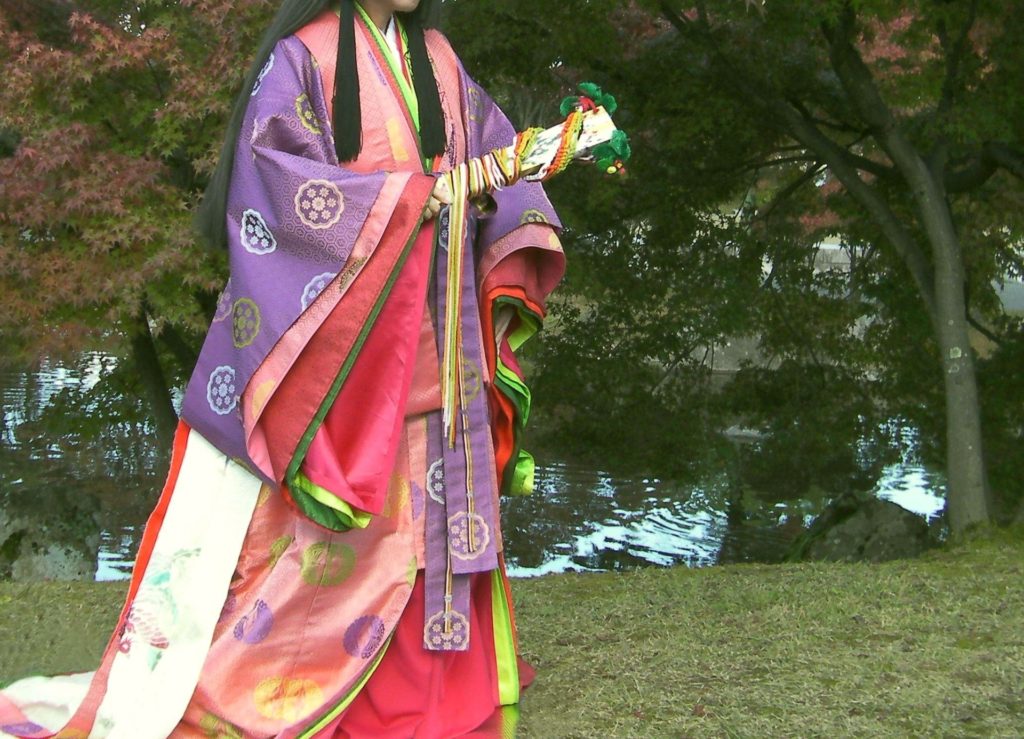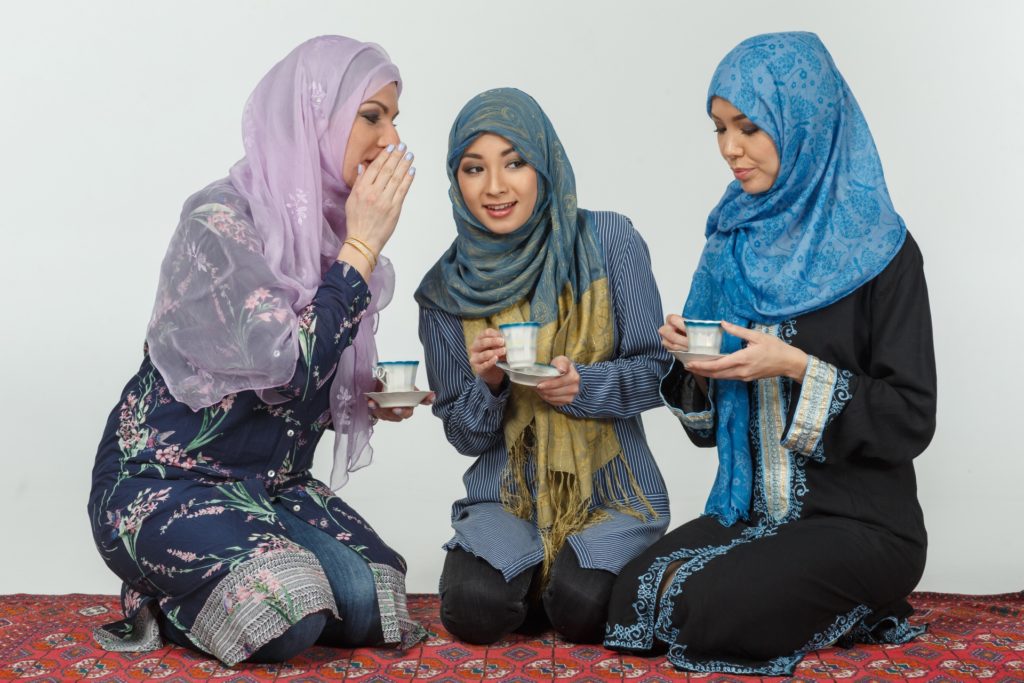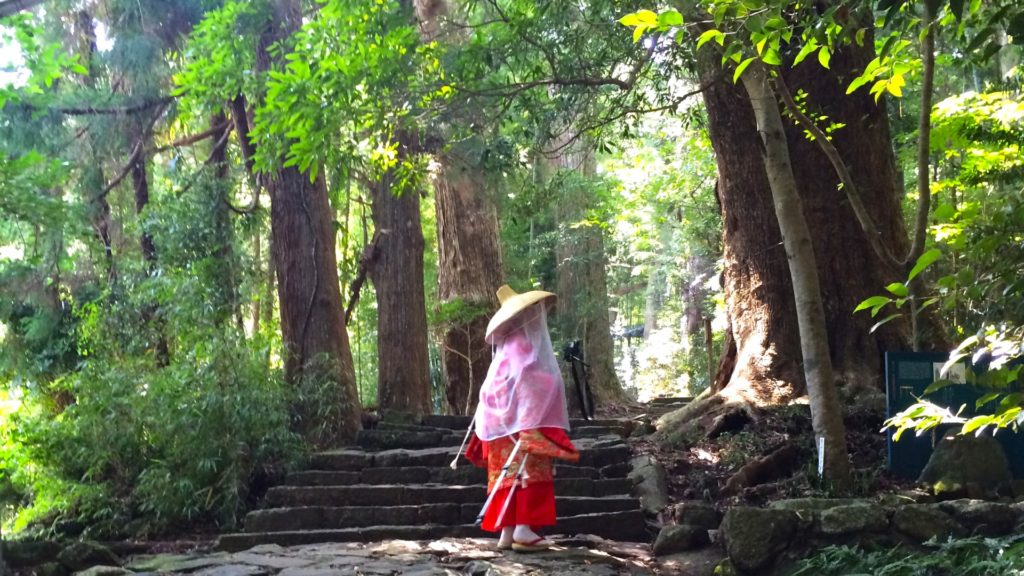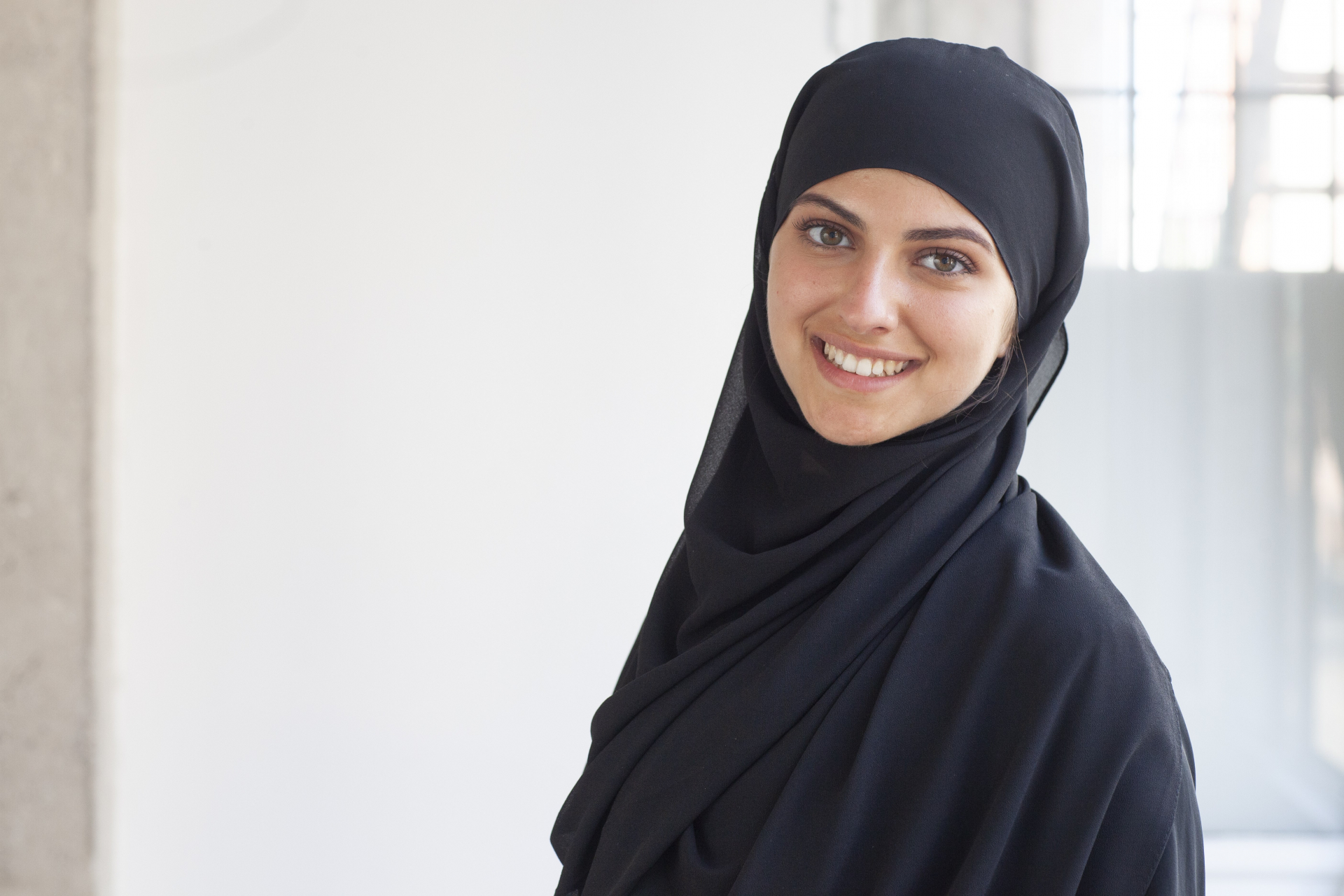非Muslimにとって、イスラム文化の象徴ともいえるものが「ベールに覆われた女性の姿」です。
ベールにも「ブルカ」「ニカーブ」「チャドル」「カイマー」「アルアミラ」「ヒジャブ」「シェイラ」など、様々な種類があり、目元まで隠すブルカは特に印象的です。

最近では、ヒジャブを着用していなかった女性が警察に拘束され亡くなったニュースは記憶に新しく、非Muslimにとってイスラムが「厳しい」「こわい」「女性蔑視」なイメージを与えることになりました。
ですが、そもそもベールの着用の起源は、女性の美しい部分を隠し「女性を外的欲望等から保護するもの」で、決して蔑視的理由からきているものではありません。
ベールを被っているから女性がお洒落を出来ないか?というと、そうでもなく、様々な形でお洒落を楽しみ、その文化も多様化してきています。
インドネシアやマレーシアでは、様々な色や柄のヒジャブで、洋服とコーディネートしてお洒落を楽しんでいます。
サウジアラビアでは唯一外部に見せることの出来る目元のメイクや、指先の付け爪によるネイルアートでお洒落を楽しんでいます。
ベール以外にも、体系を隠すような全身を覆った服装も特徴的です。
顔もスタイルもわからない、そのような状態でどのように男性と出会うのだろうか?など、非Muslimからは様々な疑問がでます。
この疑問が出てきた際、かつての日本文化とイスラム文化に共通点があることに気づきました。
今から1200年前の日本の文では、女性が男性に顔を見せることは結婚を許すことでもあったため、 扇で顔を隠していました。
基本的に女性と男性が会話をする際には、男性は部屋の外から女性に話しかけていました。部屋と廊下の境には御簾があって、中を見ることはできません。さらに屏風で遮り、その上で扇で顔を隠していました。
そのため、結婚するまで、ほぼ顔を確認することは出来なかったと思われます。
着物 はか らだの凹凸が出ないように胸を押さえて幅広い帯を締めて、寸胴な体系に見せることが良いとされていました。
当時の女性は見た目ではなく、高貴の振る舞いができなければ美しい女性とは言われませんでした。

大きな違いは、髪まで隠すイスラムに対し、黒髪を美しいものとし、唯一男性に見せても良いとしていたところです。
当時の絵は、女性の黒髪が印象的な後ろ姿の絵が、数多く残されています。
違いはあるものの、当時の日本文化とイスラム文化に共通点がありました。
日本は、長い年月の中で変遷され、今は当時の文化とは大きく異なっていますが、
イスラム教も時代の変遷の中で、女性のお洒落の幅が広がってきていると感じます。

For non-Muslims, the “veiled female figure” is a symbol of Islamic culture.
There are various types of veils, including the “burqa,” “niqab,” “chadr,” “kaymah,” “al-amirah,” “hijab,” and “sheila,” with the burqa, which covers even the eyes, being particularly striking.
Recently, the news of the death of a woman who was not wearing a hijab and was detained by the police is still fresh in our memories, giving non-Muslims an image of Islam as “strict,” “scary,” and “disrespectful to women.
However, the origin of the veil is to hide a woman’s beautiful parts and “protect her from external desires,” not for derogatory reasons.
Does the veil prevent a woman from being fashionable? women wear veils in a variety of colors and styles, and their cultures are becoming more diverse.
In Indonesia and Malaysia, women wear hijabs of various colors and patterns to coordinate with their clothes.
In Saudi Arabia, people enjoy wearing makeup around the eyes, which is the only part of the body that can be seen externally, and nail art using fake nails on the fingertips.
In addition to the veil, the full-body covering that hides the body is also a distinctive feature of women.
How do they meet men in such a state, without knowing their faces or styles? Non-Muslims have many questions such as, “How will I meet men in such a situation?
When these questions arose, I realized that there are similarities between the Japanese culture of the past and the Muslim culture.
In Japanese literature of 1200 years ago, women used to cover their faces with a fan because showing their faces to men was a form of marriage permission.
Basically, when women and men conversed, the men spoke to the women from outside the room. There was an impulse stand on the border between the room and the hallway, so they could not see inside. In addition, they hid their faces with fans.
Therefore, it is thought that it was almost impossible to see their faces until they were married.
Kimonos were supposed to be worn with a broad obi sash that held up the chest to prevent the body from being uneven, making the wearer look like a woman with a slight build.
In those days, a woman was not considered beautiful if she could not behave in a noble manner, not in terms of her appearance.
The major difference was that black hair was considered beautiful and the only hair that was allowed to be shown to men, as opposed to Islam, which even hid the hair.
There are many paintings from that period that show women with impressive black hair in the back.
Despite the differences, there were similarities between the Japanese and Islamic cultures of the time.
Japan has changed over the years, and today’s culture is very different from that of that time.
However, Islam has also undergone changes over time, and I feel that the range of women’s fashion has expanded.




